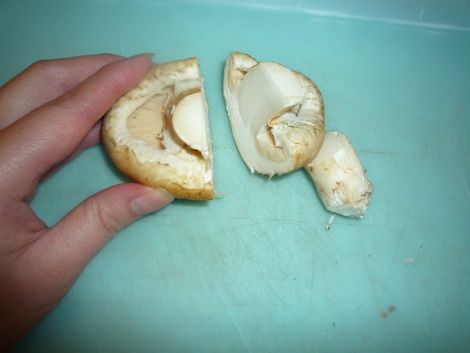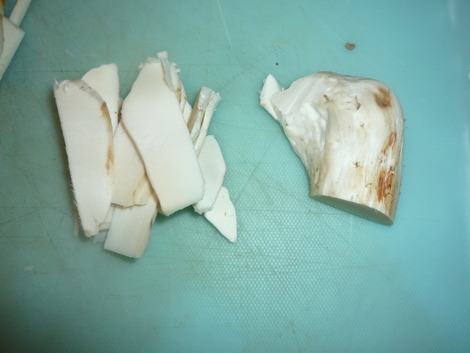Celebrate fall with matsutake. The most frugal way to enjoy your not-so-frugal mushrooms is with matsutake gohan. This build-a-meal is a little bit gouka (fancy) because of the matsutake but is also very simple, being comprised of mostly vegetables.
Ingredients (Servings 4)
2+(1/4) cups of Japanese medium grain rice (this is equivalent to 3 cups in Japanese units
2 matsutake mushrooms*
1 + 1/2 tbsp. soy sauce
1 + 1/2 tbsp. sake
1 tbsp. mirin
1 tsp. sugar
1/2 tsp. kosher salt
dashijiru (see below)
*If you only have 1 matsutake mushroom, you can substitute the other with 2 slices of age (fried tofu) See Sansai gohan for how to prep age.
Dashijiru
5 inches of kombu
3 cups of unpacked katsuobushi
3 cups of water (**Note, there should be about an equal 1:1 ratio of water to rice, however I would make a little extra since some is lost in the evaporation process and is absorbed by the katsuobushi and kombu. I also usually double this recipe if I’m making osumashi (clear fish broth soup) which goes perfectly with this rice.)
Directions
1) Wash the rice and drain the water (let it rest in a fine mesh sieve or colander 1 hour prior to cooking)
2) Make the dashijiru. (I like to make enough dashijiru for the matsutake gohan as well as the osumashi here) Allow the kombu to soak in the water for as long as possible. You can even put it in the water the night before. Allow the water to come to a slow simmer, add the katsuobushi and turn off the stove. Allow it to cool and the flavors to marry. Put through a sieve or cheese cloth and strain. For more details about making dashijiru click here.
3) Wipe down the matsutake with a damp cloth. (Don’t wash the matsutake or you will wash away the flavor)
4) Use a knife to shave off the tip of the root. (This style of cutting is called sasagaki).
5) Cut the matsutake in half if the stem is long. Then cut it lengthwise in half and then both halves into thin slices. (See photos below)
6) Add the soy sauce, sugar, sake, mirin, salt and 100 ml of the dashijiru and simmer on low heat until the salt and sugar is dissolved.
7) Add the matsutake and simmer for 4-5 minutes.
8) Strain the matsutake to separate out the sauce.
9) Add the rice to the pot and add the matsutake sauce and enough dashijiru from the reserve so that the liquid is up to just below the 3 in the pot.
10) Next add the matsutake into the pot.
11) If your rice cooker doesn’t have the steaming time built into it, allow it to steam for a minimum of 5 minutes after the switch turns to “keep warm.” Mix well after it’s ready so the bottom doesn’t burn.
12) Soak about 1 tablespoon of crushed katsuobushi and soy sauce for a minimum of 10 minutes, strain out the katsuobushi and drizzle some on top of the rice into the pot while mixing. This adds a nutty aroma of soy sauce to the rice.
Wash the rice and put it in a strainer and cover with a damp cloth.
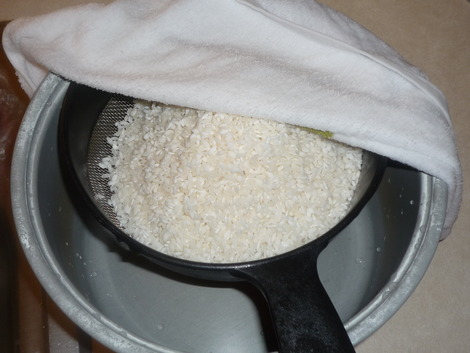
After wiping down the matsutake, cut of the tip by just cutting off the root.
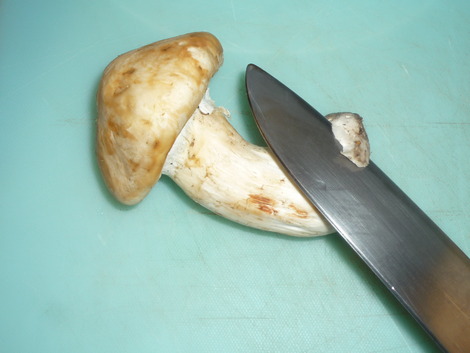
Cut as if sharpening a pencil. This style of cutting is called sasagaki.
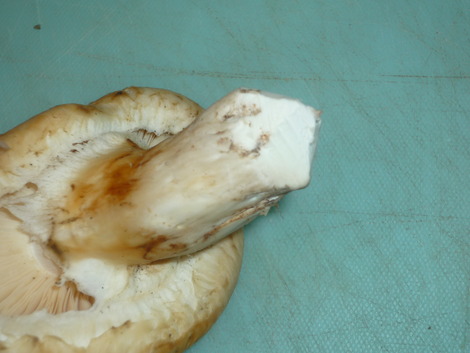
Cut the matsutake in half first if the stem is long.
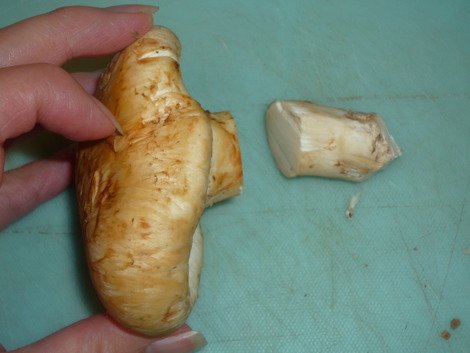
slice the matsutake into thin slices.
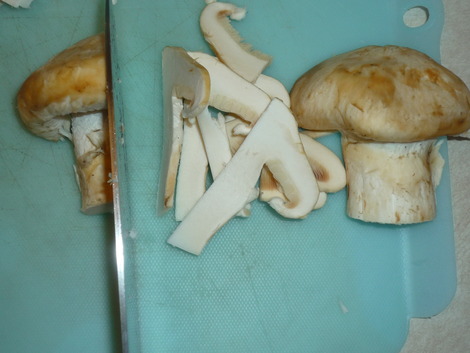
2 matsutake are sliced and ready to go.
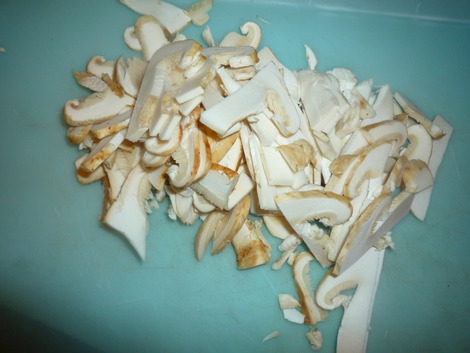
Heat the sauce ingredients until the sugar is dissolved.
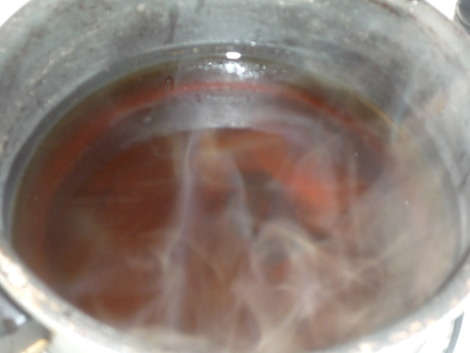
Add in the matsutake and cook 4-5 minutes.
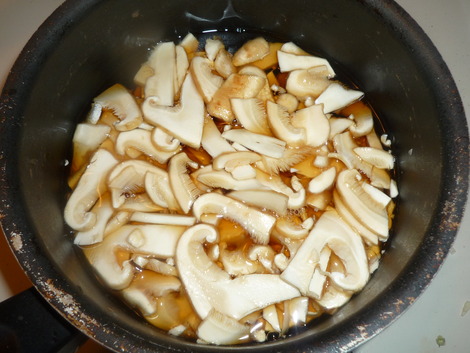
The matsutake is done cooking.
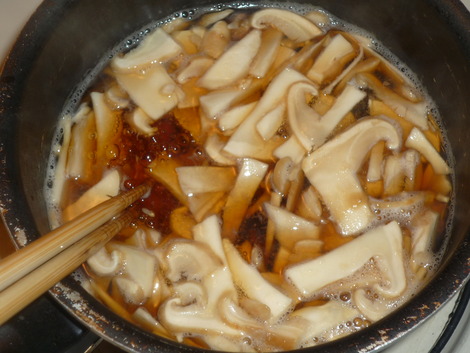
Strain the matsutake to separate out the sauce.
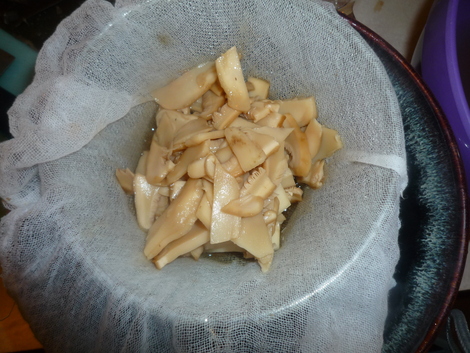
Some of the natural water from the mushrooms is now in the sauce.
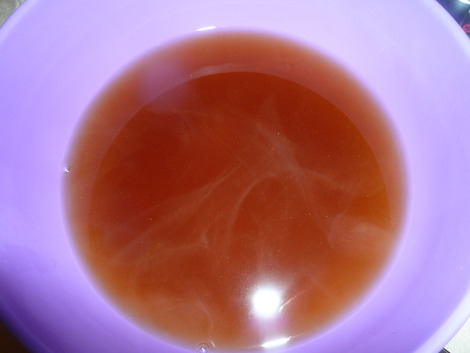
Add the sauce to the rice and add enough dashijiru so that there is just enough liquid to rice ratio.
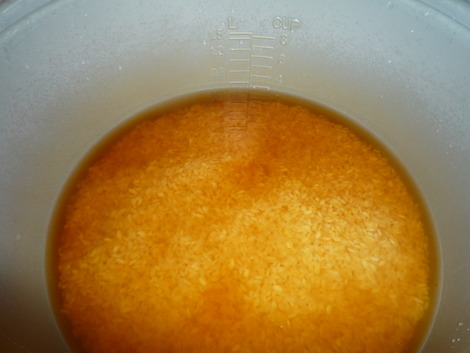
After measuring out the liquid to rice ratio, add the matsutake to the rice.
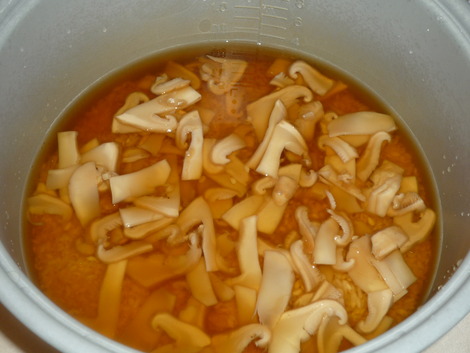
This bowl is too small. Going back for seconds.
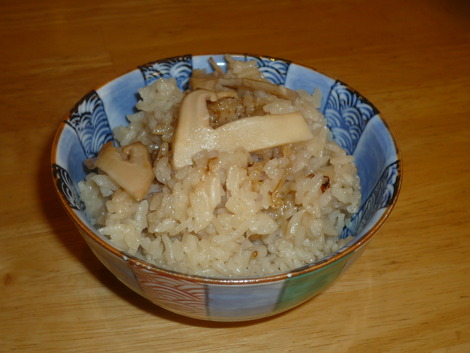
Serve with Tamago osuimono, Ohitashi, and Kyuri and Ume Konomono. I would recommend making the kyuri and ume kounomono dish the day before since the rice and soup take some time to prepare.
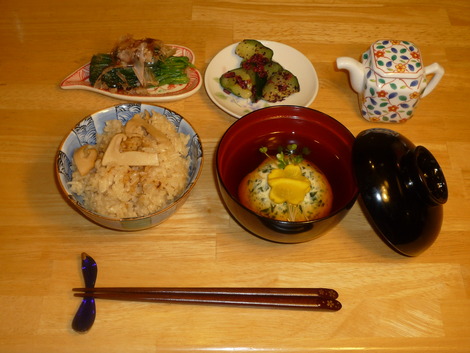

Naomi Kuwabara was born and raised in California but spent many summers in Japan growing up. She has spent time living in Hokkaido and Osaka, both meccas for Japanese cuisine. Her passion is cooking and sharing her experiences cooking Japanese food with others. Her blog Umamitopia is about her experiences cooking Japanese food. Her greatest inspirations are from her mother and grandmother. Her cooking adventures can be found at http://umamitopia.com.

